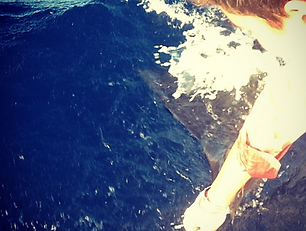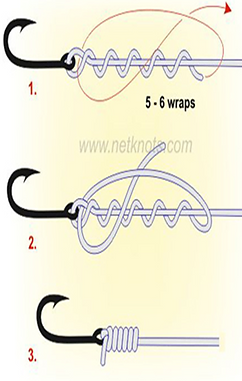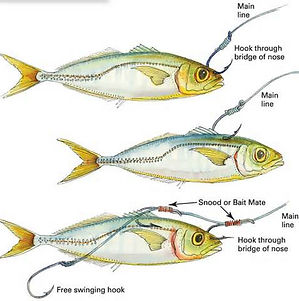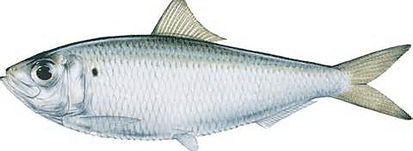
ISS ISLANDER
NEWSPAPER
2nd Edition - 27 FEB 2014
 1907558_712123148821879_928734180_n.jpg |  1506526_712597445441116_1091560833_n.jpg |
|---|---|
 1620854_712161118818082_1664154415_n.jpg |  1798605_712635982103929_1726069090_n.jpg |
 1619180_712158665484994_422795275_n.jpg |  1912498_712154398818754_994427367_n.jpg |
 1902844_712656245435236_645602463_n.jpg |  1911985_712132948820899_2141667740_n.jpg |
 1013316_712602278773966_686793181_n.jpg |  1797554_712601148774079_202766720_n.jpg |

Fishing on Tranquility


On Shore Shark Fishing...
by Nino Gaitanos: 17/11/2013
by Nino Gaitanos: 17/11/2013
Everyone should be getting their rods and reels out whenever they can if they want to catch sharks! Its shark breeding season now, and big sharks come close to shore to breed. Five sharks over 100 kilos have been caught by Tuna boats and by the Coast Guard area which is not accessible by foot legally for most fishermen, but the next best location is by Marine Charter and the Yacht Club or by Port Victoria where the local boats are kept.
Recently a sight seeing group of hammer head sharks have been spotted as well as caught and released by Constantinos Gaitanos and Harry Garrad weighing in at a respectable 4 kilograms est. One was landed and four were lost which were thought to be bigger as the fight was tougher with the same rod and reel.
Fisherman who want to challenge these sharks must always remember to use line over 10lbs and must have at least 30 cm or more of wire trace leader so they do not cut the line, the bait used was some ‘Zeclere’ caught earlier during the trip, but bonito and tuna is also suitable.
Hooks must best strong enough and bait should be large enough to tempt these sharks. J hooks are recommended and tactics vary from live baiting to bottom fishing.
All sharks should be released for future preservation of the species so they may grow in size and population to get their population rising again. Remember to bring pliers to remove hooks!

Fishing on Tranquility with Dominique Doffay, Fraser brown,
Alexei Balabanov, Danielle D’etore and Constantinos Gaitanos.
The trip started at 2 am and finished at 5 pm. Lots of fish
were caught that day with bottom fishing and trolling.
The highlight fish of the trip was a landed sail fish (est. 26KG) by Constantinos Gaitanos and a Wahoo (est.22KG). Two sailfish were lost due to a bent hook and one was not hooked properly. Lures were destroyed and hooks were cut off by wahoo everywhere.
A decent sized wahoo was hooked and caught by Alexei Balabanov and shortly after, a big one was hooked and was fought by Danielle D’etore only to be sadly lost at leader after a long hard fight.
During bottom fishing a vast amount of species were caught at respectable sizes, such as the “vielle” and “job” by Danielle D’etore. The “kwason” by Constantinos Gaitanos and a nice 5 foot black tip shark by the skipper Mervin.
The bait used during bottom fishing was a cocktail of small mackrel and bonito caught whiles trolling. People were using a mixed of circle hooks and J hooks to see which technique worked best and both worked equally well.
During trolling we used a variety of lures and colours, the lures that worked best are lures known as “Islanders” with the coulours of blue and red and another of purple and black. Both catching big wahoo’s and losing a sailfish each. Also Williamson lures worked well on the day being heavily damaged by wahoo’s and yellow fin tuna with a lure skirt of orange tiger pattern with a Green multiple shade underlay skirt.
GIANT TREVALLY FISHING (Karang fishing)
by Nino Gaitanos: 12/01/2014
USEFUL WEBSITES
USEFUL KNOTS
SEYCHELLES' FISHING SHOPS
I hope you are all ready because the GT’s are around and in big sizes! If you have the chance to fish for them this coming weekend, I have the ideal spot for you. And don’t worry, water transport will not be necessary as they are closer than you think! They can be caught from shore with most lures such as rapalas, poppers, soft baits and even shore jigs.
The perfect spot for GT fishing in Seychelles is on Ils Perserverance, on the beach rocks, where the reefs are filled with large sport fish. The GT’s travel in groups of over 15 and are all approximately the same size. Usually, they weigh roughly 1-9 kg, depending on the group. I strongly recommend that you bring a friend along because if you catch one, your friend will most likely catch one too! Besides, fishing is always more fun with friends. While fishing on a water vehicle (pedalo), whenever I caught one, I would fight then cast it and, almost every time, I’d catch another one as, generally, the group follows the hooked GT to the boat. Remember not to overfish these fish.
We want them to be around for a long time so I suggest you keep one to yourself only if you plan to eat it. It is recommended that you use a line of 20 lbs mono filament with a rod of 15lbs+ and a reel of 4000+, unless you are experienced. These fish will put up powerful fights and will destroy your lure (I have lost more than 10 lures whilst fishing for them). I also suggest that you avoid split rings - GT’s pull them right away, making you lose the fish and your hook. It is advised to use branded, strong split rings or wire to tie the hook to the lure.
DO NOT use tri hooks as they injure the fish a lot and are very hard to remove. Use single hooks and enjoy the fish!


What should you ALWAYS bring when fishing for GT?
WATER: Every fisherman gets thirsty no matter how long they fish for. Water should always be with you to avoid dehydration.
KNIFE: A knife is very useful for cutting line, fixing equipment and making rigs, while it also helps in hook removal (when necessary).
LONG TIP PLIERS: They are good when tightening knots on hooks. Tip pliers should ALWAYS be used as hooks shake violently and can easily get in your hand.
LURES: You might lose some lures, while others might not work well. Bring many types to see what works best!
SPARE HOOKS: This is very important as the last thing you want is lures without hooks, and GT’s seem to break hooks at every opportunity they get! So bring more!
SPLIT RINGS: GT’s are extremely powerful! They will stretch those split rings like elastic bands! However, they won’t shrink back, so bring many to last you (strong ones).

EDEN PLAZA
STRIKERS (Beau Vallon)
CHELSEA (Providence)
OCEAN MARINE (Victoria)

USEFUL YOUTUBE CLIPS
How to rig live bait...
The Power of Live Bait Fishing...
by Nino Gaitanos: 21/02/2014
Live baiting has become very popular in recent years, especially in big-game fishing for marlin, sailfish, tuna and many more. Although these are fish you would expect to catch in the deep, live baiting is very effective when shore fishing. You will be amazed by what can be caught on shore while live baiting! Here are several advantages and disadvantages of live baiting.
Advantages:
-
Generally, only big fish will be caught as small fish will not eat live bait.
-
It attracts big fish faster because of the live baits’ distress signals.
-
There is a higher possibility of catching big fish in comparison to bait fishing.
Disadvantages:
-
It could be considered cruel to use live bait.
-
The fish used as live bait can swim into places you might not want it to.
-
Rigs are generally complicated.
-
Only some fish work as good live bait.
Techniques:
-
In order to prevent the live bait from swimming into rocks or reefs, potentially cutting your line, I recommend you use a float to keep the fish close to the surface.
-
You may choose the depth of your live bait but you should aim for a depth between 0.5-1m if fishing in shallow waters.
-
If you plan on fishing in deep waters (10m+), you are more likely to get sport fish if you keep the live bait on the surface, whereas if the live bait goes deep, you are more likely to get sharks and rays.

What live bait to choose and how to get it?
The size of the live bait will vary with the size of the fish you are aiming to catch. Always allow the live bait to be at least 1/10 of the size of the fish you want to catch. Attach it to your mainline as shown in the diagram above.
The fish species you may use for live baiting will also vary, but not very much. The most popular fish species to use is mackerel, as they are very common, while they swim very actively and do not die quickly.
An even better species to use on shore would be sardines, as a large amount of predatory fish go for them. They can be found in large groups at Bel Ombre docks and can be caught with nets. Keeping small fish alive in captivity is fairly easy, as their water does not need to be changed and they don’t require much space.
The bigger fish are harder to keep alive but a suggestion would be to use an ice box filled with water.

SARDINE

MACKEREL

The One that got away!
"We are not born for ourselves but for the world."
